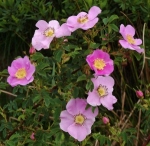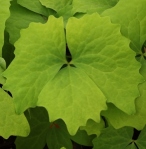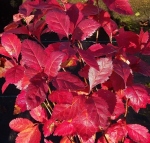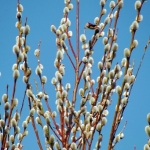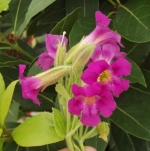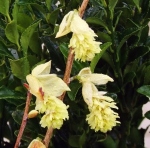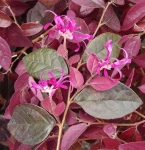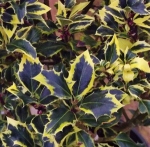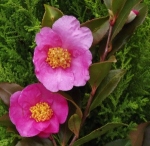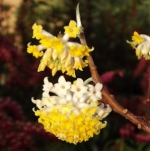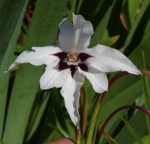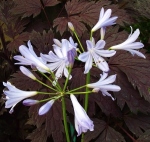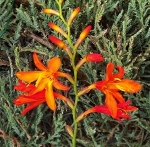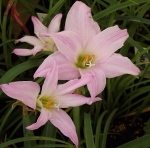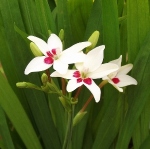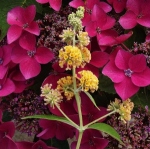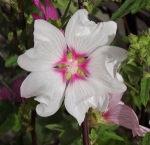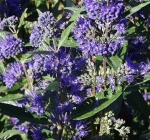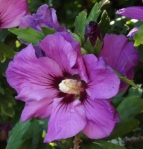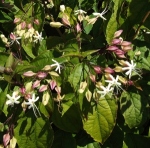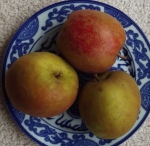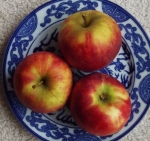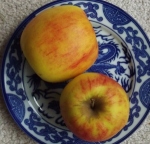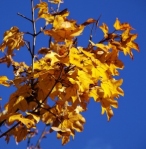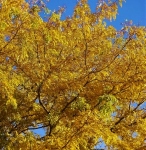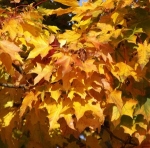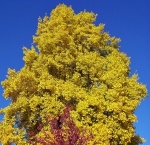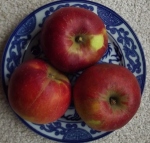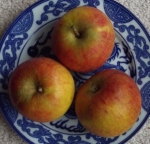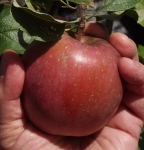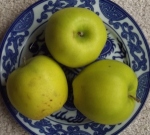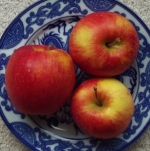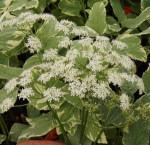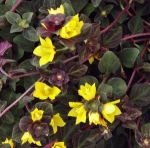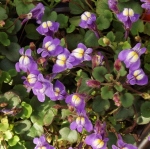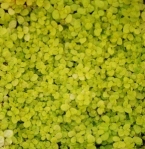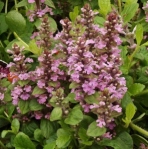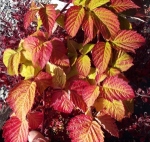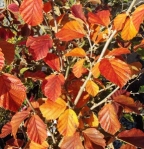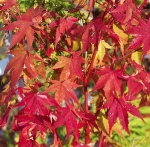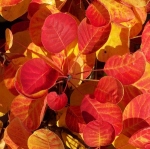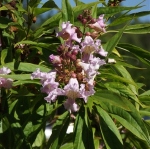 x Chitalpa tashkentensis ‘Pink Dawn’ – This small deciduous tree is an intergeneric cross of Chilopsis linearis (Desert Willow) and Southern Catalpa (C. bignonioides) and is rare in cultivation. It features showy pale pink blooms somewhat similar to Catalpa, with deep purple striping. Fast growing with linear green foliage. Drought tolerant. Grows 15-25′ high and wide. Zone 7.
x Chitalpa tashkentensis ‘Pink Dawn’ – This small deciduous tree is an intergeneric cross of Chilopsis linearis (Desert Willow) and Southern Catalpa (C. bignonioides) and is rare in cultivation. It features showy pale pink blooms somewhat similar to Catalpa, with deep purple striping. Fast growing with linear green foliage. Drought tolerant. Grows 15-25′ high and wide. Zone 7.
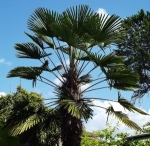 Trachycarpus wagnerianus (syn. T. fortunei ‘Wagnerianus’) – A hardy palm that is not found in the wild, but was discovered in cultivation in Japan in the late 1800’s. It is often described as a refined T. fortunei with stiff, rounded leaves on shorter petioles. Reputed to also be more tolerant of cold, wind and high humidity. Grows 12 to 20′ high by 4 to 5′ wide. Hardy to zone 7.
Trachycarpus wagnerianus (syn. T. fortunei ‘Wagnerianus’) – A hardy palm that is not found in the wild, but was discovered in cultivation in Japan in the late 1800’s. It is often described as a refined T. fortunei with stiff, rounded leaves on shorter petioles. Reputed to also be more tolerant of cold, wind and high humidity. Grows 12 to 20′ high by 4 to 5′ wide. Hardy to zone 7.
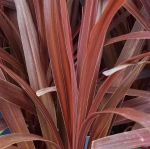 Cordyline australis ‘Red Star’ – An interesting Dracaena Palm with symmetrical burgundy-red foliage that eventually archs towards the ground. It males an excellent container specimen and should be overwintered in a cool, frost-free greenhouse or sunroom in coastal BC. Mature plants produce panicles of small white fragrant flowers. Grows 8-10′ high by 5′ wide. Zone 8.
Cordyline australis ‘Red Star’ – An interesting Dracaena Palm with symmetrical burgundy-red foliage that eventually archs towards the ground. It males an excellent container specimen and should be overwintered in a cool, frost-free greenhouse or sunroom in coastal BC. Mature plants produce panicles of small white fragrant flowers. Grows 8-10′ high by 5′ wide. Zone 8.
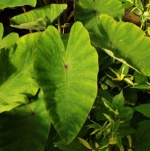 Colocasia esculenta ‘Blue Hawaii’ – Despite it’s name, this Taro features beautiful green foliage (somewhat translucent) with deep purple veining (some say bluish-purple) and edges. It is a part of the ROYAL HAWAIIAN Series bred by John Cho. Taro also makes an excellent container specimen and can be overwintered as a houseplant. Grows 30 to 48″ high . Hardy to zone 8.
Colocasia esculenta ‘Blue Hawaii’ – Despite it’s name, this Taro features beautiful green foliage (somewhat translucent) with deep purple veining (some say bluish-purple) and edges. It is a part of the ROYAL HAWAIIAN Series bred by John Cho. Taro also makes an excellent container specimen and can be overwintered as a houseplant. Grows 30 to 48″ high . Hardy to zone 8.
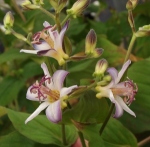 Tricyrtis ‘Tojen’ – Even exotic gardens have some shade under those palms and bananas, and this Toad Lily is ideally suited for the understory. It bears 1″ wide pale lavender-pink starry blooms from late summer into autumn that are best viewed at close range. ‘Togen’ works well in combination with smaller ferns and hosta. Grows 18-24″ high by 24″ wide. Hardy to zone 5.
Tricyrtis ‘Tojen’ – Even exotic gardens have some shade under those palms and bananas, and this Toad Lily is ideally suited for the understory. It bears 1″ wide pale lavender-pink starry blooms from late summer into autumn that are best viewed at close range. ‘Togen’ works well in combination with smaller ferns and hosta. Grows 18-24″ high by 24″ wide. Hardy to zone 5.

